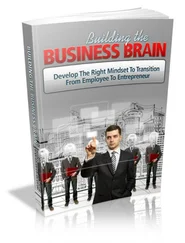Bruce Hood - The Domesticated Brain - A Pelican Introduction (Pelican Books)
Здесь есть возможность читать онлайн «Bruce Hood - The Domesticated Brain - A Pelican Introduction (Pelican Books)» весь текст электронной книги совершенно бесплатно (целиком полную версию без сокращений). В некоторых случаях можно слушать аудио, скачать через торрент в формате fb2 и присутствует краткое содержание. Год выпуска: 2014, ISBN: 2014, Издательство: Penguin Books Ltd, Жанр: Старинная литература, на английском языке. Описание произведения, (предисловие) а так же отзывы посетителей доступны на портале библиотеки ЛибКат.
- Название:The Domesticated Brain: A Pelican Introduction (Pelican Books)
- Автор:
- Издательство:Penguin Books Ltd
- Жанр:
- Год:2014
- ISBN:9780141974873
- Рейтинг книги:4 / 5. Голосов: 1
-
Избранное:Добавить в избранное
- Отзывы:
-
Ваша оценка:
- 80
- 1
- 2
- 3
- 4
- 5
The Domesticated Brain: A Pelican Introduction (Pelican Books): краткое содержание, описание и аннотация
Предлагаем к чтению аннотацию, описание, краткое содержание или предисловие (зависит от того, что написал сам автор книги «The Domesticated Brain: A Pelican Introduction (Pelican Books)»). Если вы не нашли необходимую информацию о книге — напишите в комментариях, мы постараемся отыскать её.
The Domesticated Brain: A Pelican Introduction (Pelican Books) — читать онлайн бесплатно полную книгу (весь текст) целиком
Ниже представлен текст книги, разбитый по страницам. Система сохранения места последней прочитанной страницы, позволяет с удобством читать онлайн бесплатно книгу «The Domesticated Brain: A Pelican Introduction (Pelican Books)», без необходимости каждый раз заново искать на чём Вы остановились. Поставьте закладку, и сможете в любой момент перейти на страницу, на которой закончили чтение.
Интервал:
Закладка:
38. M. Gummerum, Y. Hanoch, M. Keller, K. Parsons and A. Hummel (2010), ‘Preschoolers’ allocations in the dictator game: The role of moral emotions’, Journal of Economic Psychology , 31, 25–34.
39. Ernst Fehr, Helen Bernhard and Bettina Rockenbach (2008), ‘Egalitarianism in young children’, Nature , 454, 1079–1084.
40. Katharina Hamann, Felix Warneken, Julia R. Greenberg and Michael Tomasello (2012), ‘Collaboration encourages equal sharing in children but not in chimpanzees’, Nature , 476, 328–31.
41. P. Blake and D. Rand (2010), ‘Currency value moderates equity preference among young children’, Evolution and Human Behavior , 31, 210–18.
42. David Reinstein and Gerhard Riener (2012), ‘Reputation and influence in charitable giving: an experiment’, Theory and Decision , 72, 221–43.
43. F. Alpizar, F. Carlsson and O. Johansson-Stenman (2008), ‘Anonymity, reciprocity, and conformity: Evidence from voluntary contributions to a national park’, Journal of Public Economics , 92, 1047–1060.
44. K. L. Leimgruber, A. Shaw, L. R. Santos and K. R. Olson (2012), ‘Young Children Are More Generous When Others Are Aware of Their Actions’, PLoS ONE 7(10): e48292. doi:10.1371/journal.pone.0048292
45. Felix Warneken and Michael Tomasello (2006), ‘Altruistic helping in human infants and young chimpanzees’, Science , 311, 1301–2.
46. M R. Lepper, D. Greene and R. E. Nisbett (1973), ‘Undermining children’s intrinsic interest with an extrinsic reward: A test of the “overjustification” hypothesis’, Journal of Personality and Social Psychology , 28, 129–37.
47. F. Warneken (2013), ‘What do children and chimpanzees reveal about human altruism?’ in M. R. Banaji and S. A. Gelman (eds), Navigating the Social World. What Infants, Children, and Other Species Can Teach Us , New York: Oxford University Press.
48. Joan Silk, Commentary on Mike Tomasello (2009), Why We Cooperate , Boston: Boston Review.
49. F. Warneken, B. Hare, A. P. Melis, D. Haus and M. Tomasello, (2007), ‘Spontaneous altruism by chimpanzees and young children’, PL oS Biology , 5, 1414–20.
50. Judith M. Burkart, Ernst Fehr, Charles Efferson and Carel P. van Schaik (2007), ‘Other-regarding preferences in a non-human primate: Common marmosets provision food altruistically’, Proceedings of the National Academy , 104, 19762–6.
51. A. Ueno and T. Matsuzawa (2004), ‘Food transfer between chimpanzee mothers and their infants’, Primates , 45, 231–9.
52. William T. Harbaugh, Ulrich Mayr and Daniel R. Burghart (2007), ‘Neural responses to taxation and voluntary giving reveal motives for charitable donations’, Science , 316, 1622–5.
53. Ernst Fehr and Simon Gächter (2002), ‘Altruistic punishment in humans’, Nature , 415, 137–40.
54. W. Guth, R. Schmittberger and B. Schwarze (1982), ‘An experimental analysis of ultimatum bargaining’, Journal of Economic Behavior & Organization , 3, 367–88.
55. A. G. Sanfey, J. K. Rilling, J. A. Aronson, L. E. Nystrom and J. D. Cohen (2003), ‘The neural basis of economic decision-making in the Ultimatum Game’, Science , 300, 1755–8.
56. D. Knoch, A. Pascual-Leone, K. Meyer, V. Treyer and E. Fehr (2006), ‘Diminishing reciprocal fairness by disrupting the right prefrontal cortex’, Science , 314, 829–32.
57. K. Jensen, J. Call and M. Tomasello (2007), ‘Chimpanzees are maximizers in an ultimatum game’, Science , 318, 107–9.
58. Sarah F. Brosnan and Frans de Waal (2003), ‘Monkeys reject unequal pay’, Nature , 425, 297–9.
59. J. Bräuer, J. Call and M. Tomasello (2006), ‘Are apes really inequity averse?’, Proceedings of the Royal Society B, 273, 3123–8.
60. Dan Ariely (2008), Predictably Irrational , New York: HarperCollins.
61. John Nash (1951), ‘Non-cooperative Games’, Annals of Mathematics, 54, 286–95.
62. Richard Dawkins (1976), The Selfish Gene , Oxford University Press.
63. C. Adami and A. Hintze, ‘Evolutionary instability of zero determinant strategies demonstrates that winning is not everything’, Nature Communications , 4, 2193. doi: 10.1038/ncomms3193 (2013).
64. Paul Slovic (2007), ‘ “If I look at the mass I will never act”: Psychic numbing and genocide’, Judgement and Decision Making , 2, 79–95.
65. Karen E. Jenni and George Loewenstein (1997), ‘Explaining the “Identifiable victim effect” ’, Journal of Risk and Uncertainty , 14, 235–57.
66. D. Västfjäll, E. Peters and P. Slovic (in preparation), ‘Representation, affect, and willingness-to-donate to children in need’, unpublished manuscript.
67. Leon R. Kass (1997), ‘The Wisdom of Repugnance’, The New Republic , 216, 17–26.
68. Jesse Bering (2013), Perv: The Sexual Deviant in All of Us , Scientific American/Farrar, Straus and Giroux.
69. Jonathan Haidt (2001), ‘The emotional dog and its rational tail: A social intuitionist approach to moral judgement’, Psychological Review, 108: 814–34.
70. J. Thomson (1985), ‘The Trolley Problem’, Yale Law Journal , 94, 1395–1415.
71. J. D. Greene, R. B. Sommerville, L. E. Nystrom, J. M. Darley and J. D. Cohen (2001), ‘An fMRI investigation of emotional engagement in moral judgement’, Science , 293, 2105–8.
72. William B. Swann, Jr., Ángel Gómez, John F. Dovidio, Sonia Hart and Jolanda Jetten (2010), ‘Dying and killing for one’s group: Identity fusion moderates responses to intergroup versions of the trolley problem’, Psychological Science, 21, 1176–83.
73. Joshua Greene (2007), ‘The secret joke of Kant’s soul’, in W. Sinnott-Armstrong (ed.), Moral Psychology, Vol. 3: The Neuroscience of Morality: Emotion, Disease, and Development , Cambridge, MA: MIT Press.
74. Jean Piaget (1932/1965). The Moral Judgement of the Child , New York: Free Press.
75. Lawrence Kohlberg (1963), ‘Development of children’s orientation towards a moral order (Part I). Sequencing in the development of moral thought’, Vita Humana , 6, 11–36.
76. B. M. DePaulo and D. A. Kashy (1998), ‘Everyday lies in close and casual relationships’, Journal of Personality and Social Psychology , 74, 63–79.
77. B. M. DePaulo, D. A. Kashy, S. E. Kirkendol, M. M. Wyer and J. A. Epstein (1996), ‘Lying in everyday life’, Journal of Personality and Social Psychology , 70, 979–95.
78. William von Hippel and Robert Trivers (2011), ‘The evolution and psychology of self-deception’, Behavioral and Brain Sciences , 34, 1–56.
79. Robert Trivers (1976), Foreword, in R. Dawkins, The Selfish Gene , Oxford University Press, pp. 19–20.
80. M. D. Alicke and C. Sedikides (2009), ‘Self-enhancement and self-protection: What they are and what they do’, European Review of Social Psychology , 20, 1–48.
81. Tali Sharot (2012), The Optimism Bias: A Tour of the Irrationally Positive Brain , London: Vintage.
82. C. Ward Struthers, Judy Eaton, Alexander G. Santelli, Melissa Uchiyama and Nicole Shirvani (2008), ‘The effects of attributions of intent and apology on forgiveness: When saying sorry may not help the story’, Journal of Experimental Social Psychology , 44, 983–92.
83. S. Harris, S. A. Sheth and M. S. Cohen (2007), ‘Functional Neuroimaging of belief, disbelief and uncertainty’, Annals of Neurology , 63, 141–7.
84. M. Main and C. George (1985), ‘Responses of young abused and disadvantaged toddlers to distress in age mates’, Developmental Psychology , 21, 407–12.
Читать дальшеИнтервал:
Закладка:
Похожие книги на «The Domesticated Brain: A Pelican Introduction (Pelican Books)»
Представляем Вашему вниманию похожие книги на «The Domesticated Brain: A Pelican Introduction (Pelican Books)» списком для выбора. Мы отобрали схожую по названию и смыслу литературу в надежде предоставить читателям больше вариантов отыскать новые, интересные, ещё непрочитанные произведения.
Обсуждение, отзывы о книге «The Domesticated Brain: A Pelican Introduction (Pelican Books)» и просто собственные мнения читателей. Оставьте ваши комментарии, напишите, что Вы думаете о произведении, его смысле или главных героях. Укажите что конкретно понравилось, а что нет, и почему Вы так считаете.











